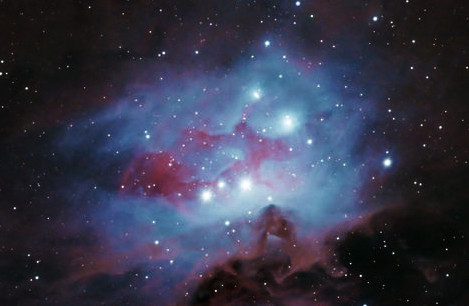NGC 6888 and PN G75.5+1.7
Constellation: Cygnus
NGC 6888, the Crescent nebula, is an emission nebula in the constellation Cygnus. It lies about 5’000 Ly from Earth. It is formed by the fast stellar wind from the Wolf-Rayet star WR136, colliding with and energizing the slower moving wind ejected by the star when it became a red giant around 250,000 to 400,000 years ago. The result of the collision is a shell and two shock waves, one moving outward and one moving inward.
PN G75.5+1.7 is a planetary nebula. A planetary nebula is a type of emission nebula consisting of an expanding, glowing shell of ionized gas ejected from red giant stars (a dying star). Despite their name, planetary nebulae have nothing to do with planets.
Dates:
This image was taken on July 3, 2022
Telescope & Mount:
Celestron 9.25″ EdgeHD with Hyperstar 4.0 on a Celestron CGX-L mount. Guiding with Tecnosky 70/400 and ASI290MM Mini.
Imaging:
Camera: ASI2600MC-Pro
Data:
Optolong L-eNhance: 77x120s
Total integration time: 2h 34′

Dates:
This image was taken in late August, 2022. Narrowband filters Hydrogen-alpha and Oxygen-III were used for the nebulae, while RGB filters were used for the stars.
Telescope & Mount:
Orion Optics UK AG14 on a Paramount ME GEM mount.
Imaging:
Camera: Kepler KL4040 CMOS 1×1 Binned
Data:
R: 60x60s
G: 60x60s
B: 58x60s
Hα: 120x180s
O-III: 229x180s
Total integration time: 20h 25′

A closer look at NGC 6888. WR136 is the bright star near the center of the nebula.
The image below is a magnification of PN G75.5+1.7.


